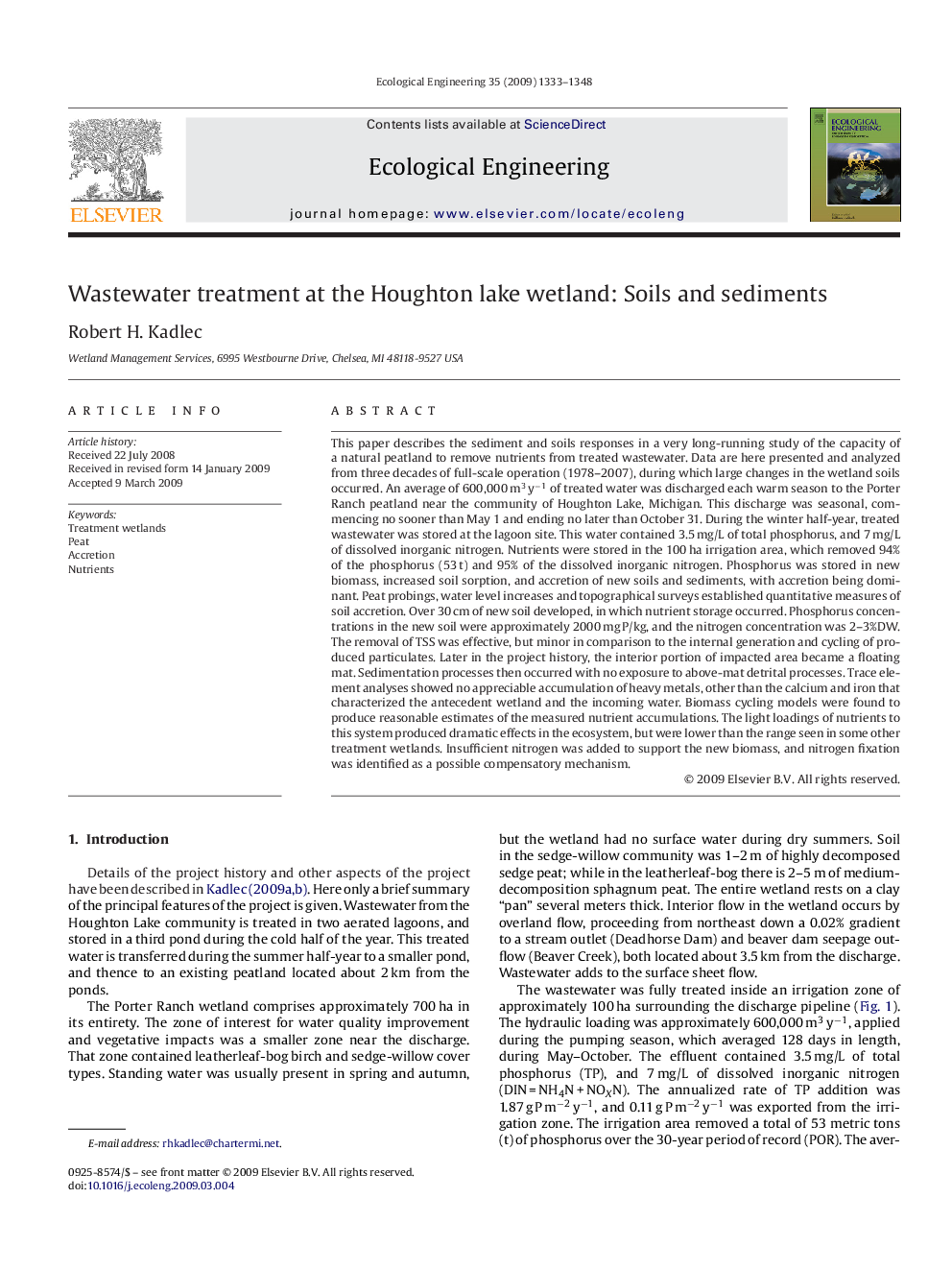| Article ID | Journal | Published Year | Pages | File Type |
|---|---|---|---|---|
| 4390619 | Ecological Engineering | 2009 | 16 Pages |
Abstract
This paper describes the sediment and soils responses in a very long-running study of the capacity of a natural peatland to remove nutrients from treated wastewater. Data are here presented and analyzed from three decades of full-scale operation (1978-2007), during which large changes in the wetland soils occurred. An average of 600,000 m3 yâ1 of treated water was discharged each warm season to the Porter Ranch peatland near the community of Houghton Lake, Michigan. This discharge was seasonal, commencing no sooner than May 1 and ending no later than October 31. During the winter half-year, treated wastewater was stored at the lagoon site. This water contained 3.5 mg/L of total phosphorus, and 7 mg/L of dissolved inorganic nitrogen. Nutrients were stored in the 100 ha irrigation area, which removed 94% of the phosphorus (53 t) and 95% of the dissolved inorganic nitrogen. Phosphorus was stored in new biomass, increased soil sorption, and accretion of new soils and sediments, with accretion being dominant. Peat probings, water level increases and topographical surveys established quantitative measures of soil accretion. Over 30 cm of new soil developed, in which nutrient storage occurred. Phosphorus concentrations in the new soil were approximately 2000 mg P/kg, and the nitrogen concentration was 2-3%DW. The removal of TSS was effective, but minor in comparison to the internal generation and cycling of produced particulates. Later in the project history, the interior portion of impacted area became a floating mat. Sedimentation processes then occurred with no exposure to above-mat detrital processes. Trace element analyses showed no appreciable accumulation of heavy metals, other than the calcium and iron that characterized the antecedent wetland and the incoming water. Biomass cycling models were found to produce reasonable estimates of the measured nutrient accumulations. The light loadings of nutrients to this system produced dramatic effects in the ecosystem, but were lower than the range seen in some other treatment wetlands. Insufficient nitrogen was added to support the new biomass, and nitrogen fixation was identified as a possible compensatory mechanism.
Related Topics
Life Sciences
Agricultural and Biological Sciences
Ecology, Evolution, Behavior and Systematics
Authors
Robert H. Kadlec,
